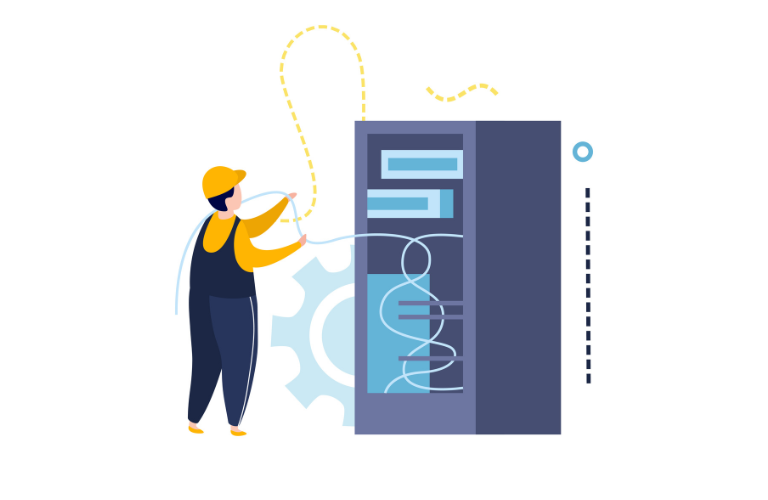In 2025, Autonomous Ubuntu Servers are revolutionizing IT operations by integrating AI agents to create self-healing systems. These advanced setups detect, prevent, and fix issues without human intervention, ensuring robust performance and minimal downtime.
This article explores how to deploy AI-driven solutions on Ubuntu servers, offering practical steps, use cases, and time-saving shortcuts. Whether you’re battling slow performance, unexpected outages, or seeking seamless operations, Autonomous Ubuntu Servers provide a game-changing approach to modern infrastructure management. Let’s dive into this cutting-edge solution and unlock its potential for your systems.
Table of Contents
Understanding Autonomous Ubuntu Servers
Picture a server that spots trouble before it strikes, fixes itself, and keeps running smoothly. That’s the promise of Autonomous Ubuntu Servers. These systems harness machine learning, predictive analytics, and automation to monitor operations, catch anomalies, and correct failures in real time. Built on the reliable Ubuntu platform, they’re ideal for businesses needing resilient, low-maintenance solutions in a fast-paced digital world.
The goal is clear: slash downtime, boost efficiency, and free IT teams from repetitive tasks. By combining Ubuntu’s stability with AI’s intelligence, Autonomous Ubuntu Servers adapt to challenges, making them essential for industries like cloud computing, healthcare, e-commerce, and more. This fusion delivers a proactive, self-managing infrastructure.
Why Autonomous Ubuntu Servers Matter in 2025
Today’s IT landscape demands speed, reliability, and resilience. Slow performance, unexpected outages, and manual fixes cost time, money, and customer trust. Autonomous Ubuntu Servers tackle these pain points head-on, offering a forward-thinking solution. Here’s why they’re critical in 2025:
- Minimized Downtime: Self-healing mechanisms keep services running, vital for e-commerce or healthcare.
- Cost Savings: Less human intervention reduces labor expenses.
- Scalability: AI dynamically adjusts resources to handle traffic spikes.
- Security Boost: Real-time threat detection neutralizes risks fast.
In 2025, regulations like the EU’s NIS2 Directive and Digital Operational Resilience Act (DORA) push for stronger digital resilience. The UK’s upcoming Cyber Security and Resilience Bill adds similar pressure. Autonomous Ubuntu Servers help meet these standards, delivering a future-proof edge for compliance and performance.
Core Mechanisms of Self-Healing Systems
Autonomous Ubuntu Servers rely on three key processes to stay resilient: detection, prevention, and correction. Let’s explore how these work to keep your systems humming.
Detection: Spotting Issues Early
The foundation of self-healing is catching problems before they escalate. AI agents on Autonomous Ubuntu Servers excel at this through:
- Continuous monitoring of system health, tracking CPU, memory, and response times.
- Predictive analytics to forecast failures using historical data.
- Anomaly detection algorithms to flag unusual patterns or deviations.
- Root cause analysis (RCA) to dig into logs, network traffic, and metrics for precise diagnosis.
This proactive detection ensures issues are identified early, setting the stage for swift action.
Prevention: Stopping Trouble Before It Starts
Once a risk is spotted, Autonomous Ubuntu Servers act to prevent escalation. Key strategies include:
- Auto-Scaling: Dynamically adjusts resources in cloud setups to handle demand surges.
- Self-Optimization: Tweaks configurations and resource allocations for peak stability.
- Security Shields: Identifies and neutralizes threats like malware or breaches in real time.
- Data Redundancy: Creates backup copies of critical data for high availability.
These measures stop failures in their tracks, keeping your Autonomous Ubuntu Servers robust.
Correction: Fixing Failures Fast
When issues do slip through, AI steps in to repair them autonomously. Autonomous Ubuntu Servers can:
- Use AI-driven tools to detect and patch software bugs without human input.
- Isolate faulty components and reroute operations to backups.
- Roll back to a stable state after corrupted updates or failures.
- Apply temporary workarounds to maintain functionality until a full fix is ready.
This rapid correction minimizes disruptions, ensuring continuous operation.
Use Case: Autonomous Ubuntu Servers in Action
Let’s see Autonomous Ubuntu Servers at work. Imagine an e-commerce site hosted on an Ubuntu server during a Black Friday sale. Traffic spikes threaten slowdowns or crashes. Here’s how it plays out:
The site lags as CPU usage soars. AI agents on the Autonomous Ubuntu Server detect the spike, predict a potential crash, and auto-scale resources by adding more processing power. They optimize memory allocation, isolate a buggy process, and restore performance—all without IT staff lifting a finger. The result? Seamless shopping, no lost sales, and zero downtime.
This use case highlights why Autonomous Ubuntu Servers are a 2025 must-have, especially for businesses where uptime equals revenue.
Setting Up Autonomous Ubuntu Servers: A Simple Implementation
Ready to deploy Autonomous Ubuntu Servers? Here’s a practical, step-by-step guide to build a self-healing system. We’ll use basic tools and commands for an accessible start.
Step 1: Prepare Your Ubuntu Server
Begin with a fresh Ubuntu 24.04 LTS installation. Ensure it’s updated and secure for a solid foundation.
sudo apt update && sudo apt upgrade -y
sudo apt install ufw
sudo ufw enableThis updates packages and activates a firewall, bolstering security for your Autonomous Ubuntu Server.
Step 2: Install Monitoring Tools
Monitoring is key for self-healing. Install Prometheus and Grafana to track system health:
sudo apt install prometheus -y
sudo apt install grafana -y
sudo systemctl start prometheus
sudo systemctl start grafana-serverThese tools monitor CPU, memory, and network stats, feeding real-time data to AI agents for analysis.
Step 3: Add AI Agents for Self-Healing
Deploy a basic AI agent for self-healing. Use a Python script with the psutil library to monitor and act. Install dependencies:
sudo apt install python3-pip -y
pip3 install psutil requestsSave this script as self_heal.py to detect high CPU usage and restart a service like Apache2:
import psutil
import os
import time
THRESHOLD = 80 # CPU usage threshold in percent
while True:
cpu = psutil.cpu_percent(interval=1)
if cpu > THRESHOLD:
print("High CPU detected! Restarting service...")
os.system("sudo systemctl restart apache2")
time.sleep(60) # Check every minuteRun it in the background:
python3 self_heal.py &This simple script watches CPU levels and restarts Apache2 if usage exceeds 80%, a core self-healing feature for Autonomous Ubuntu Servers.
Step 4: Test Connectivity
Verify your setup works. Use ping to check reachability across key points:
ping -c 4 127.0.0.1 # Test local server
ping -c 4 10.10.10.200 # Test a client IPSuccessful pings confirm your Autonomous Ubuntu Server is connected and operational.
Step 5: Automate Reporting
Stay informed with automated reports. Install a mail utility and set up a cron job:
sudo apt install mailutils -yEdit the crontab for hourly status emails:
crontab -eAdd this line:
0 * * * * /bin/bash -c "echo 'Server Status: $(uptime)' | mail -s 'Autonomous Ubuntu Servers Report' your.email@example.com"Now, your Autonomous Ubuntu Server emails uptime reports, keeping you in the loop.
Time-Saving Shortcuts for Autonomous Ubuntu Servers
IT teams crave efficiency. These shortcuts speed up deployment and management of Autonomous Ubuntu Servers:
- Pre-Built Tools: Use Ansible for automated configs. Install with sudo apt install ansible -y and script tasks.
- AI Frameworks: Adopt Zabbix for AIOps. Install via sudo apt install zabbix-agent -y for quick integration.
Command Aliases: Save time with shortcuts. Add to ~/.bashrc:
alias checkup=”ps aux | grep self_heal.py”
- alias pingtest=”ping -c 4 10.10.10.200″
Run checkup or pingtest for instant checks. - Cloud Boost: Host on AWS or Azure for built-in auto-scaling, simplifying resource management.
These tricks cut setup time and keep Autonomous Ubuntu Servers running smoothly.
Challenges to Watch
Deploying Autonomous Ubuntu Servers isn’t without hurdles. Be mindful of these:
- Complexity: Building AI logic requires skills and rich training data.
- False Alarms: AI might misread normal spikes as failures, wasting resources.
- Security Risks: Automated systems could be hacker targets if not secured.
- Cost: Initial investment in tools, training, and infrastructure can be steep.
In 2025, advances like explainable AI and better datasets are easing these issues, making Autonomous Ubuntu Servers more practical and trustworthy.
Real-World Applications
Autonomous Ubuntu Servers excel across sectors, solving real problems:
- Cloud Hosting: Auto-restore virtual machines during outages for seamless service.
- Healthcare: Ensure 24/7 access to patient records and telemedicine platforms.
- IoT: Predict and fix factory equipment failures in industrial setups.
- E-Commerce: Handle traffic surges during sales, protecting revenue.
These applications show the versatility of Autonomous Ubuntu Servers in 2025’s demanding landscape.
Future of Autonomous Ubuntu Servers
The future is bright for Autonomous Ubuntu Servers. Advances in deep learning and reinforcement learning will enhance prediction accuracy and repair speed. Tighter security via AI-driven threat detection will counter evolving risks. As regulations tighten and downtime costs soar, these servers will be key to staying competitive, reliable, and compliant in a connected world.
Conclusion
Autonomous Ubuntu Servers are transforming IT in 2025, blending AI agents with self-healing power to slash downtime, cut costs, and boost reliability. With simple steps—updating Ubuntu, installing monitoring tools, scripting AI fixes, testing pings, and automating reports—you can build a robust system. Shortcuts like Ansible, aliases, and cloud integration save time. Embrace Autonomous Ubuntu Servers to solve slow performance, meet regulations, and lead in a fast-moving digital era.
FAQs
1. What Are Autonomous Ubuntu Servers?
Autonomous Ubuntu Servers are systems running on the Ubuntu platform that use AI agents to self-monitor, detect issues, and fix problems without human help. They combine Ubuntu’s reliability with machine learning to ensure minimal downtime and optimal performance.
2. How Do Autonomous Ubuntu Servers Work?
They operate in three steps: detection, prevention, and correction. AI tools monitor system health, predict failures using data, and take actions like auto-scaling or patching bugs to keep the server running smoothly, all in real time.
3. Why Use Autonomous Ubuntu Servers in 2025?
In 2025, they cut downtime, save costs, and boost security. Autonomous Ubuntu Servers handle traffic spikes, meet strict regulations like DORA, and free IT teams from manual fixes, making them ideal for businesses needing reliability.
4. Can I Set Up Autonomous Ubuntu Servers Easily?
Yes! Start with Ubuntu 24.04 LTS, install monitoring tools like Prometheus, and add a simple AI script to detect and fix issues (e.g., restart services on high CPU). Basic commands and tools make setup beginner-friendly.
5. What Industries Benefit from Autonomous Ubuntu Servers?
They shine in cloud hosting, healthcare, e-commerce, and IoT. For example, e-commerce sites use Autonomous Ubuntu Servers to handle sale traffic, while healthcare keeps patient systems online 24/7 with zero interruptions.
6. Are There Risks with Autonomous Ubuntu Servers?
Some challenges exist, like setup complexity or false alarms from AI. Security risks also need attention. However, 2025 advances in AI and proper configuration make Autonomous Ubuntu Servers reliable and safe.




